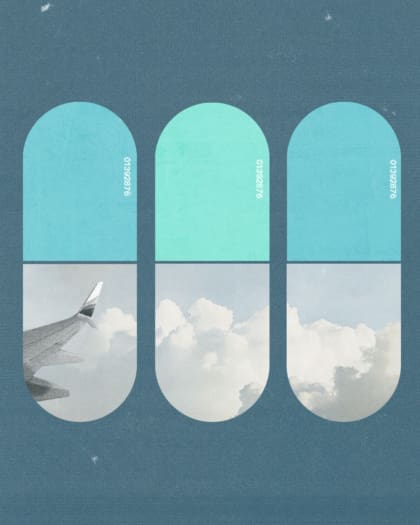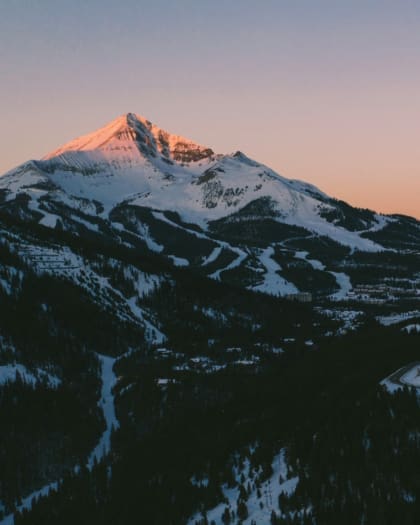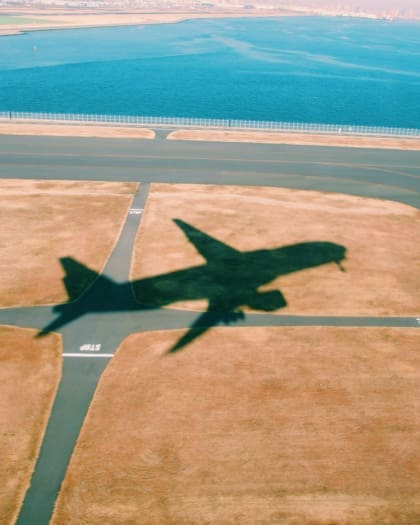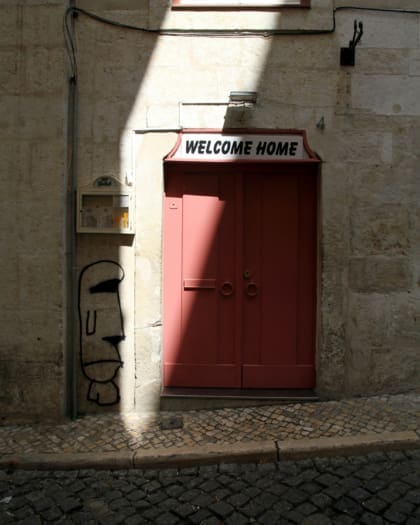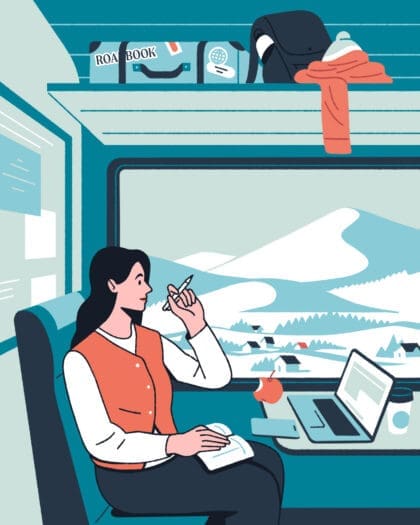
How to travel better in 2025
Ringing in the new year with a collective call to action, Roadbook defines the travel trends, shifting sentiments and positive movements set to shape the industry over the next 12 months and beyond
Let’s face it, we’d all like to get more from the travel experience. For some, that means making smarter choices in destinations, carriers or stays. For others, it’s about reducing the friction points en route – smoothing our negotiation of documents, airports, transfers, currencies or language barriers. For frequent fliers, it might be about better managing our workload while away, or feeling our best on the road, or pausing to acknowledge the moments we’ve carved out for ourselves.
Whether we’re conscious of it or not, travelling better is partly about the contribution a trip makes to our personal journey. Was the experience genuinely memorable? Were we enriched by the experience? Without question, travelling better today also means making the right choices for the environment; reducing the negative impact on the people and places we visit – and the planet as a whole – making good on travel’s potential as a force for good.
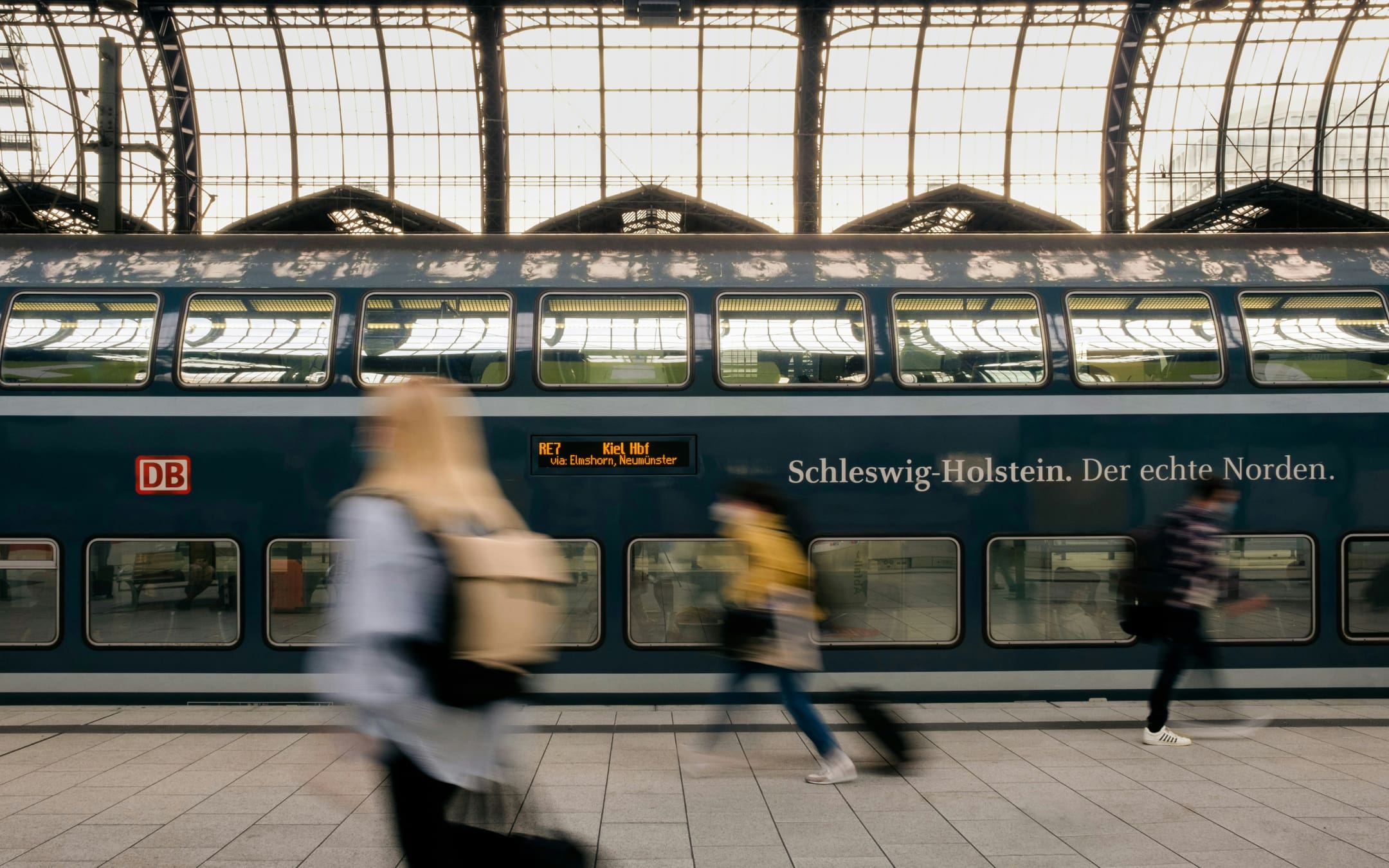
Travel insights show that pent-up demand has worked its way through the system. Supply has largely recovered and traveller numbers are almost back to pre-pandemic highs – boosted by the continuation of the remote work and digital nomad movement. In this era, we’re starting to witness a backlash against algorithm-driven overtourism, giving us hope that the year ahead will see the emergence of a more mindful, considered approach to travel.
The world’s changing fast and there’s a lot to take in. So we’ve been asking the simple question – how can we travel better in 2025?
Rediscover the joy in travel
Whether it’s overhyped beauty spots, TikTok travel fads or a feeling that globalisation is having a homogenising effect on hotel design, there’s a creeping sense that the algorithms shaping our online interactions are also shrinking our travel horizons. Free your mind from the noise in 2025 and prioritise disconnection and spontaneity. Instead of building watertight plans with no room for manoeuvre (or spending days glued to your phone making plans on the ground), build in time for discovery and detours, borrow itineraries from friends who have done it before and embrace switching plans in an instant based on recommendations from locals. This year, it’s time to forget the hot topic on social media and create your own adventure.
Traditional boundaries are being broken – solo travel is booming, sober travel likewise – and travel providers are rising to meet demand from those seeking personal growth and adventure. Rather than picking an off-the-shelf holiday, opt for an experience better tailored to your needs – even if that requires finding or redefining your tribe. “There’s no one ‘right’ way to travel – do it your own way,” says Rhiane Fatinikun, the British author who forged her own path by setting up female outdoor collective Black Girls Hike. “Community is about people with shared values, goals and experiences coming together. By connecting with like-minded people, you create adventures that fit your pace, comfort level, fears and passions. It’s also the quickest way to grow and meet amazing individuals who inspire you.”
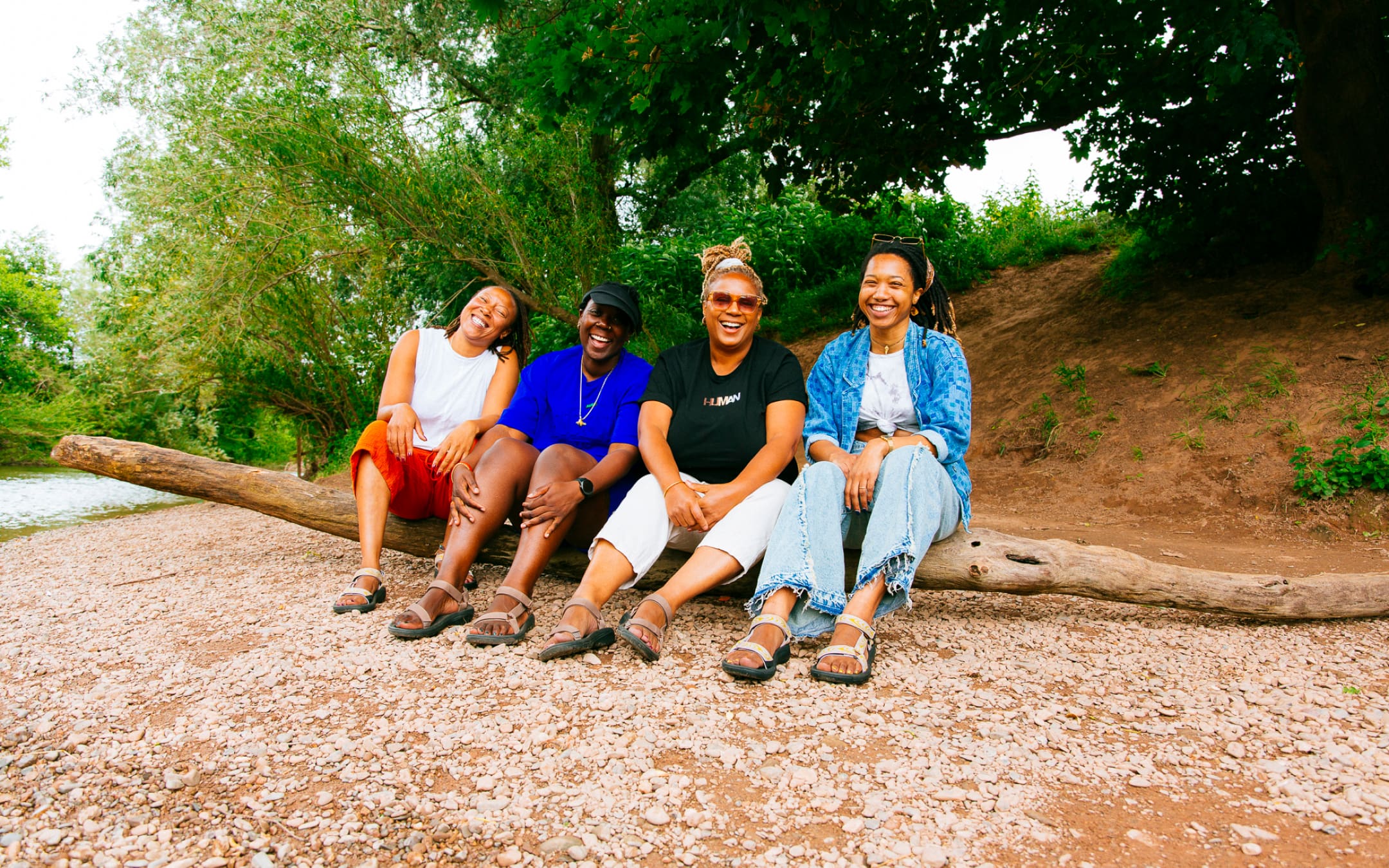
Prioritise your health
Health and wellness has emerged as an increasingly important motivation to travel. Collectively, we’ve become more aware of the physical and mental benefits of switching up environments and switching off devices. At one end of the spectrum sits the rise in digital detoxes, deep immersion in nature, and retreats specialising in everything from breathwork to psychedelics; at the other, a tooled-up range of science-led clinics centred around longevity and biohacking. More generally, hotels and resorts worldwide have raised the bar significantly in their in-house offerings, meaning we’re better served than ever when it comes to enhancing mind and body. If self-care or self-improvement are on your radar for 2025, ask how you want to feel when away from home and set goals and intentions before selecting an experience designed to take you there.
Yet even before we arrive, there are travel hacks that can enhance our health. Scientific breakthroughs and better collective understanding of our bodies mean we can enhance our diet and maximise our sleep before, during and after travelling to ensure we’re at our best. Beyond the inflight basics – avoiding caffeine, sugary desserts and the allure of the drinks trolley; supplementing ultraprocessed plane food with high fibre, high protein snacks – a greater understanding of circadian science is transforming how we feel beyond the airport terminal.


While many theories are in circulation on how to minimise the effects of jetlag, caused by disruption to our circadian rhythm when we cross time zones, neuroscientists believe that light exposure is the best lever we have to help synchronisation. “It used to be thought that the master clock in our brain imposed a circadian rhythm on the rest of the body but now we know that a circadian rhythm exists in every cell in the body,” says Dr Russell Foster, head of the Sleep and Circadian Neuroscience Institute at the University of Oxford. “Why jetlag feels so ghastly is that the liver, the gut, the brain, the muscles are all misaligned with each other and the rate at which all they realign with the master clock is not straightforward.”
Foster recommends banking sleep in advance and start matching your sleeping pattern with to your new time zone a few nights before you travel – apps such as Timeshifter, which creates sleep-cycle plans based upon your itinerary, are a smart tool to help put us on track. “The basic rule is that when you’re travelling across time zones in a western direction, seek out the light upon arrival, stay up later and get the dusk light in the new time zone,” he says. “If you’re travelling east, hiding from morning light for the first few days and then seeking out afternoon light will help you lock on to the new time.” Equally crucial is eating at mealtimes that match the new time zone to help the gut and liver realign.
Airlines, airport architects and hotel designers alike are all tapping into the same science to focus on lighting to maximise our adaptation to a new time zone by encouraging sleep at the right time for our bodies. If you need to be fresh from the get-go, opt for a hotel group championing this concept (circadian lighting, blackout curtains, smart thermostats, pillow programmes) in its rooms.
Where possible, slow down
Whether it’s stories from before the jet age, literary classics or what we read from those fortunate enough to sail, cruise or “summer” overseas, the appeal of slow travel is clear – and it’s becoming increasingly attainable. A more conscious alternative to madcap dashes to tick destinations off a list, slow travel offers a softer footprint and a more immersive experience. Bike tours, multi-day hikes, river boat cruises and sailing trips all allow destinations to be taken in at a leisurely pace, allowing deeper immersion in the new locations, while remote work, digital nomad visas and mid-career breaks also open up opportunities for extended stays.
Travelling less frequently but for longer can also have positive environmental outcomes. With sustainable aviation fuel (SAF) still yet to take off, flying remains problematic for those seeking to reduce their footprint. However, a vast improvement and significant investment in public transport coverage and new rail services has coincided with the rise of better booking platforms and operators knitting together often complex train and bus networks. Opting for train travel means skipping the friction of airport check-ins, transfers and baggage limits and instead rolling directly into city centre stations, meaning you can start exploring as soon as you step off the train.
“We talk a lot about the ‘joy of the journey’, because travelling by train, boat and bus is really wonderful. It means you get to experience places rather than fly over them, and feel their connection through food, landscape, people and dialect as you move between them,” says Cat Jones, founder of flight-free sustainable tour operator Byway Travel. “You can slow down, stop off, appreciate your surroundings, and be open to serendipity, while truly seeing the world.”

Beyond transportation, slow travel at its simplest means staying longer in one place. For those blessed with the flexibility to plan extra time in a destination, how best to go about it? Do your research and create an approximate daily budget (covering accommodation, food, transport and leisure) to ensure you don’t find yourself short. A benefit of extended time in a destination is that it affords you the option of basing yourself in a neighbourhood a little off the tourist trail, with places to stay that are often more authentic and better value.
If remote work is part of your mission, base yourself somewhere you can live and work with ease. Find an aparthotel hybrid that offers home-from-home amenities – kitchen, workspace, wifi and washing machine – that allow you to work and live with ease, or track down the city’s best coworking options. And finally, enjoy that extra time – immerse yourself in the local language, cuisine, arts and music scenes, find your new favourite restaurant, running route or bar and revel in the deeper understanding of a destination that’s sure to linger long in the memory
Take the path less trodden
There are many reasons to champion alternative or off-peak destinations. Top of the list? The world needs it. After a year where anti-tourist sentiment hit headlines, the relationship between visitor and visited is in need of a reset – which, for travellers, translates to making smarter choices. Will that mid-August dash to a jam-packed island in the Med truly be a trip for the ages? Does queueing for a snatched moment in a photogenic hotspot really bring joy? The good news is that the road less travelled offers serious delight in discovery and a unique sense of space, time and connection.
Do your research before booking: tap into a destination’s local news sources to gauge the mood and dig deeper on worthy alternatives. The concept of “destination dupes” emerged last year, referring to places that offer similar characteristics to a much-loved location, but with (often) lower rates and fewer crowds – perhaps swapping Paris for Bordeaux, the Maldives for Palawan, Santorini for Paros. Consider the elements or outcomes you want from a trip (thriving food scene, active pursuits, brilliant boutiques?) and apply that filter to other locations that might make for a more memorable escape
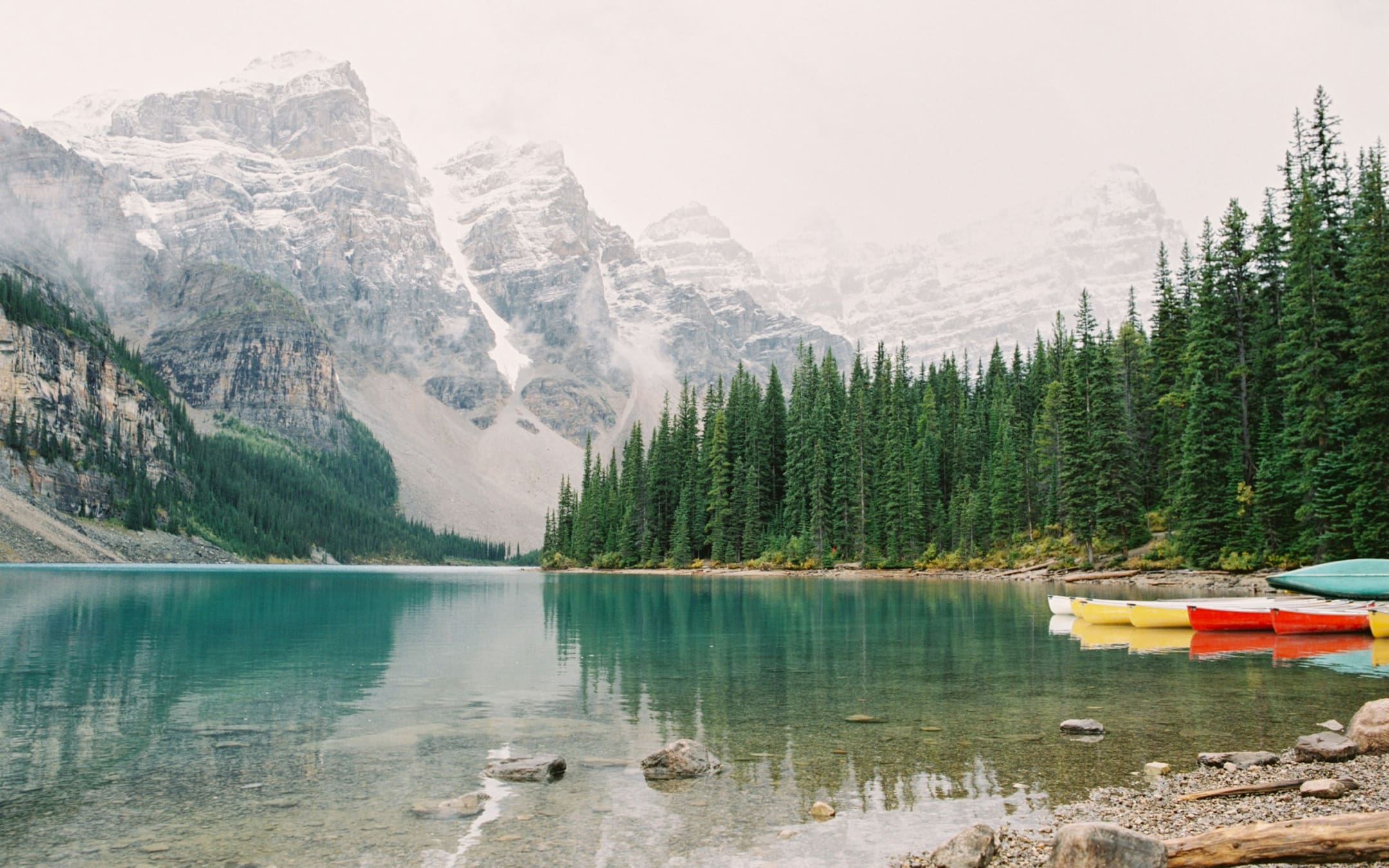
Dead-set on a popular destination? As with most things, timing is crucial. Tourist hotspots come under increased pressure during peak season or school holidays, so try a quieter time of year. Shoulder-season travel has surged as more hotels and resorts remain open longer to accommodate savvy travellers. Be aware of a destination’s climatic averages and quirks – no one wants to be surprised by monsoon season – and find yourself rewarded for your flexibility. Speaking of weather, with the climate crisis negatively impacting a swathe of traditional ‘summer’ destinations, traveller data indicates that more visitors are heading to cooler locations such as Finland, Canada and Iceland over the summer months – offering another rewarding route for open-minded travellers.
“When done responsibly, choosing lesser-known destinations helps to spread the benefits of tourism to new communities,” says Dr Susanne Etti, global environmental impact manager at Intrepid Travel, whose 2024 ‘Not Hot’ list was designed to highlight lesser-known destinations as an antidote to more traditional inspiration lists. “Travelling off season can make sure that local people who rely on tourism have an income year-round and don’t have to leave their towns and villages to find other employment during low season.”
Trust in technology
It’s been impossible to escape the noise around artificial intelligence in the past 12 months. The travel industry’s complexity and logistics lends itself well to machine-learning AI platforms like ChatGPT, and more and more major platforms are integrating its potential into chatbots. Rapid improvements mean it’s increasingly proving its worth when it comes to researching our own trips and putting together personal itineraries – just ask ChatGPT and it will throw one together in an instant. While accuracy is an issue, it can provide a useful starting point. The skill lies in the prompts we feed it: the more nuanced questions we ask, the better responses we receive. Crucially, be sure to fact check what’s thrown back your way, and remember that the most current information will not be reflected in its answers.
“Technology is the best ally for tourism, as it has the potential to transform travel through personalising our journey,” says Natalia Bayona of UNWTO, an organisation that’s set to launch several significant platforms this year aimed at improving the travel experience. “Artificial intelligence can translate documents or messages, removing the language barrier that was always a challenge. It’s important to remember that technology is a tool – it won’t replace human beings, and travel is a very human-centric sector. But it does add value, and it enables us to make better decisions.”
Meanwhile, a new wave of apps have smoothed the travel experience, enabling us to travel smarter. Whether it’s helping you find water refill stations (Refill) and public toilets (Flush, Toilet Finder), create packing lists, compile itineraries and book tours, track wildlife – or wildfires – and predict the likelihood of the Northern Lights, these tools can reduce risk and enhance our travel experiences. Consider the friction points you’re likely to encounter en route and download any digital fixes in advance.

Demand more from providers
No one can dispute the life-changing potential of travel, but how do we reconcile our desire to see the world with the inherent carbon emissions it creates? While no one wants to be guilt-shamed about their travel choices, the industry today is defined by those actively engaging in reducing emissions and minimising their footprint and those that aren’t. To move the dial further, we as consumers should vote with our feet and by arming ourselves with a few basics, it’s become a little easier to make informed choices.
The hospitality sector is often quick to champion its eco-credentials. There’s a raft of certification schemes out there that purport to reflect high sustainability standards. Among the big ones, B-Corp status denotes high standards of social and environmental performance, transparency and accountability. LEED and BREEAM accreditation rates a building’s green credentials. Further environmental certifications for how a hotel is operated include Green Key, Green Globe, ISO 14001 and EU Ecolabel. As yet, none of these are currently compulsory and certification is often awarded based on voluntarily supplied information, meaning it’s far from a transparent issue, yet these schemes remain a good indicator to look for when booking.
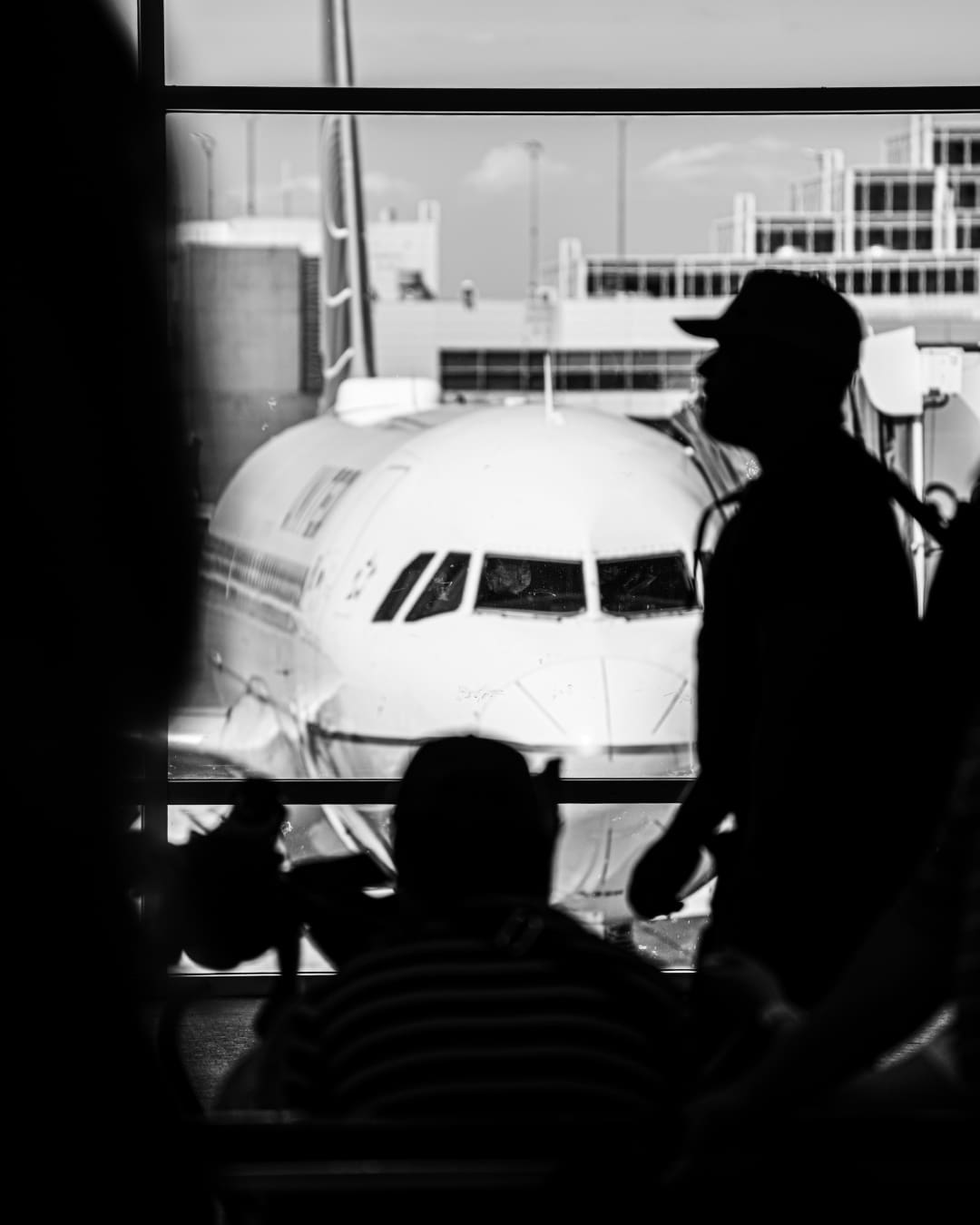
While incoming legislation such as the EU’s Green Claims Directive will make it far harder for providers to market themselves with greenwash, it’s still worth getting up to speed on some of the more dubious claims out there. “Greenwashing remains a significant challenge in today’s sustainability landscape,” says Randy Durband, CEO of the Global Sustainable Tourism Council, which provides international accreditation for sustainable tourism certification bodies. “A common form of greenwashing is to make reference to one or two good practices while ignoring others. Words like ‘natural’, ‘green’ or ‘eco-friendly’ that are not clearly defined or substantiated with evidence can be misleading and are better to avoid.”
Instead, look for concrete actions that indicate a venue is on the right track. Top marks go to those that have eradicated single-use plastics, limited greenhouse gas emissions by becoming energy efficient and limiting food waste, minimised water usage, and actively promoted biodiversity preservation – backed up by available data that demonstrates how far they’ve come.
Enjoy making a positive impact
Of course, sustainability isn’t just environmental or economic – it’s also social. As travellers, our choices affect the communities we visit, providing the potential for the cash in our pockets to benefit the places and people we encounter – if spent wisely. Embrace opportunities to get under the skin of a destination, opting for locally owned businesses rather than the nearest Starbucks. When choosing accommodation, ask if your hotel is plugged into the local community. While it’s hard to twig if a hotel offers a truly equitable pay package to its workforce, check if it engages with local artists, designers, craftspeople and chefs. Assess whether the food market, street art or architecture tours it offers seem authentic, non intrusive and respectful.
Expect more cities to follow Copenhagen’s lead by rewarding those visitors’ making sustainable choices. Hop on a municipal bike scheme when sightseeing, buy direct from artisans, and consider volunteering for a local cause to forge a deeper connection with the culture you’re visiting. Plus, with short-term lets causing major problems for local housing markets in over-touristed destinations, consider the recent renaissance in home swapping, which doesn’t remove property from the housing market, as a worthy alternative.
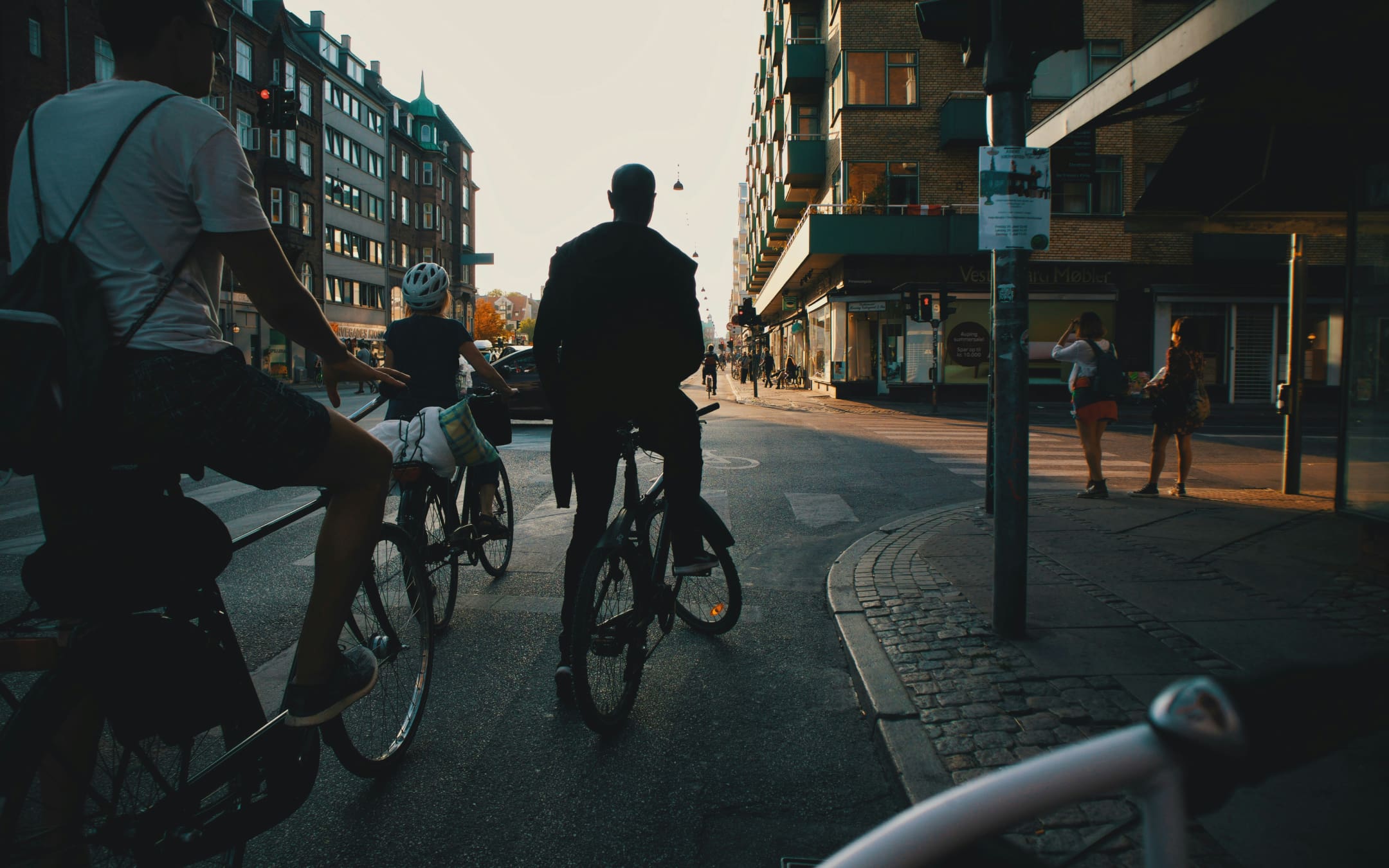
“The key is to travel with respect and intention. Eat at locally owned restaurants to support local businesses and take the time to learn about the culture and recent history of where you’re visiting,” says Tom Marchant, founder of tour operator Black Tomato. “Choose experiences that leave a place better than when you found it, whether it’s rewilding efforts, engaging with local cooperatives, or spending time with artisans who keep ancient traditions alive. It’s about being mindful of the footprints we leave behind and striving to create a positive ripple effect.”
“I’m a believer in arts and crafts and I think that’s a great way to give back and preserve the value of a destination,” adds Natalia Bayona, executive director at UN Tourism, who advises keeping eyes open to the details and artisanal touches that embody a destination’s culture. “It’s a win-win when you engage with the local community – you see how locals do things and also you understand the stories behind the products and the destination as a whole.”
And lastly, to travel better in 2025, stay tuned for Roadbook’s perspective on the emerging travel trends worth exercising your grey matter over in 2025. From noctourism and hotel design trends to emerging destinations and airport innovations – we break down the buzz to what it really means.

